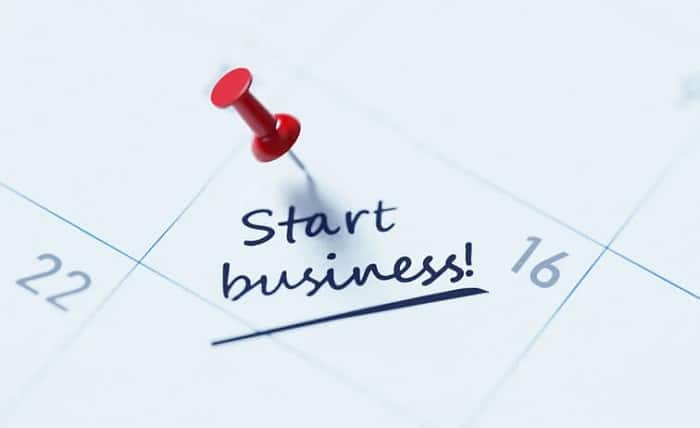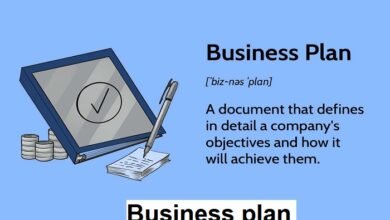How to Start a Business: A Step-by-Step Guide to Entrepreneurial Success

Starting a business is one of the most exciting and rewarding ventures an individual can undertake. However, it can also be a daunting process, filled with challenges and uncertainties. The journey to entrepreneurship requires careful planning, research, and dedication to turn an idea into a profitable and sustainable business. In this guide, we will break down how to start a business step-by-step, providing you with all the essential information to navigate through the initial stages of setting up your business and beyond.
How to Start a Business: The Essentials of Entrepreneurship
Starting a business begins with identifying a viable business idea that aligns with your skills, passion, and market demand. However, before diving into the process, it’s essential to thoroughly understand the landscape and take key initial steps that will lay the foundation for your success. From understanding your target audience to securing funding, the journey of how to start a business involves several critical phases.
Step 1: Research Your Market and Industry
When learning how to start a business, one of the first and most crucial steps is market research. Before committing to any business idea, it is vital to evaluate the market demand, competition, and consumer preferences. Understanding these factors will help you identify gaps in the market, target the right customers, and position your business effectively.
- Identify your target audience: Who are your potential customers? What are their pain points and needs?
- Analyze the competition: Who are your competitors, and how do they meet customer needs? What can you do better or differently?
- Study industry trends: What trends and innovations are shaping the industry? How can your business capitalize on these changes?
Researching the market will help you refine your business idea and ensure that your business is positioned to meet real consumer demand.
Step 2: Create a Business Plan
A business plan is an essential document that outlines your business goals, strategies, and financial projections. It serves as a roadmap for how to start a business and how to navigate challenges along the way. A well-crafted business plan provides clarity and direction, making it easier to secure funding and measure success.
Key components of a business plan include:
- Executive summary: A concise overview of your business and its goals.
- Company description: Details about your business, products, services, and value proposition.
- Market research: Insights from your research about the target market, industry, and competitors.
- Marketing and sales strategy: How you plan to attract and retain customers.
- Operations plan: The logistics behind running your business, including staffing, suppliers, and workflows.
- Financial projections: Projected income, expenses, and cash flow for the first few years.
Having a solid business plan is one of the most important steps in learning how to start a business, as it sets a clear path for achieving long-term success.
Step 3: Choose the Right Business Structure
When figuring out how to start a business, choosing the right legal structure for your business is crucial. The business structure you select will affect your taxes, liability, and ability to raise funds. There are several types of business structures, each with its advantages and disadvantages:
- Sole proprietorship: The simplest form, where you own and operate the business alone.
- Partnership: A business owned by two or more individuals who share profits and liabilities.
- Limited liability company (LLC): A flexible structure that provides liability protection while allowing for tax flexibility.
- Corporation: A separate legal entity that offers strong liability protection but involves more complexity.
Your business structure will impact everything from day-to-day operations to how you handle taxes, so it’s important to choose carefully based on your specific needs.
Step 4: Register Your Business and Obtain Licenses
Once you’ve chosen your business structure, the next step in how to start a business is registering your company with the appropriate authorities. This includes selecting a unique business name, registering it with the state or local government, and obtaining any required business licenses or permits. The specific requirements vary depending on your location and industry, but some common steps include:
- Register your business name: Choose a name that reflects your brand and is easy to remember. Check if the name is available and legally protect it with a trademark.
- Apply for an Employer Identification Number (EIN): An EIN is a unique identifier used by the IRS for tax purposes. It’s required for most businesses.
- Obtain business licenses and permits: Depending on your business type and location, you may need specific licenses to operate legally.
Completing these legal requirements will help you establish your business as a legitimate entity and avoid future complications.
Step 5: Secure Funding for Your Business
Understanding how to start a business also means understanding how to fund it. Depending on the nature of your business, you may need to secure funding to cover initial startup costs, equipment, inventory, or marketing expenses. There are various sources of funding available to entrepreneurs, including:
- Self-funding: Using personal savings or investments to finance the business.
- Small business loans: Loans offered by banks or alternative lenders to support new businesses.
- Venture capital: Investment from venture capitalists in exchange for equity in your company.
- Crowdfunding: Raising small amounts of money from a large number of people, typically through online platforms.
- Grants and subsidies: Government or private grants that provide funding for specific types of businesses or industries.
Securing the right funding is vital to ensuring you have the resources necessary to launch your business and cover operational costs until you start generating revenue.
Step 6: Build a Brand and Marketing Strategy
Now that you understand how to start a business and have the legal and financial aspects in place, it’s time to focus on building your brand and marketing your products or services. Your brand is more than just a logo; it encompasses your values, your message, and how you connect with your target audience.
Key elements of building a brand and marketing strategy include:
- Creating a brand identity: Design a logo, choose brand colors, and develop a unique voice that resonates with your audience.
- Developing a marketing plan: Outline strategies for reaching your target market, such as digital marketing, social media campaigns, or traditional advertising.
- Building an online presence: Set up a website, optimize it for search engines (SEO), and create social media profiles to engage with your audience.
- Generating leads and sales: Use sales funnels, email marketing, and customer relationship management tools to convert leads into paying customers.
Marketing is essential to growing your business and attracting customers, so it’s important to focus on crafting a strategy that aligns with your brand and goals.
Step 7: Launch Your Business
With everything in place, it’s time to officially launch your business. This is the culmination of all your hard work and planning. When learning how to start a business, the launch phase is when you’ll see your idea come to life and start engaging with real customers. Some key steps to take during the launch include:
- Announce your launch: Use social media, email marketing, and press releases to spread the word about your business.
- Host a launch event: If applicable, consider hosting an event to create buzz and attract potential customers.
- Offer promotions: Consider launching with special deals or discounts to entice customers to make their first purchase.
- Gather feedback: Early customer feedback is invaluable. Use it to make improvements to your products, services, and customer experience.
Launching your business successfully will set the stage for growth and success in the years to come.
Conclusion
Learning how to start a business can be a challenging and rewarding experience, but with the right steps and a clear strategy, anyone can turn an idea into a thriving enterprise. From conducting market research and writing a business plan to securing funding and launching your business, each step in the process is critical to your success. By following this guide, you will be well-equipped to navigate the complexities of starting a business and set yourself up for long-term growth.
Remember, success doesn’t happen overnight. It takes time, effort, and perseverance. By staying focused and continually refining your strategies, you can create a business that not only survives but thrives in today’s competitive market.
FAQs
1. How much money do I need to start a business?
The amount of money needed depends on the type of business you want to start. Small businesses can often be started with a few thousand dollars, while more complex ventures may require significant capital.
2. What is the best legal structure for a small business?
The best structure depends on your needs, but an LLC is often a good choice for small businesses due to its flexibility and liability protection. Consult with a legal professional for personalized advice.
3. How long does it take to start a business?
Starting a business can take anywhere from a few weeks to several months, depending on factors like obtaining licenses, securing funding, and building your brand.
4. Can I start a business without a business plan?
Technically, you can start a business without a formal plan, but it’s highly discouraged. A business plan helps you clarify your goals, secure funding, and stay on track as you grow your business.
5. How do I market my new business?
Marketing your new business involves creating a strong brand, developing a marketing strategy, and using tools like social media, SEO, and paid advertising to reach your target audience.




